Human Cryptobiosis: Suspended Animation and Its Implications to Our Future
Is it possible for humans to be placed into stasis by cooling the body in order to save lives and travel through space?
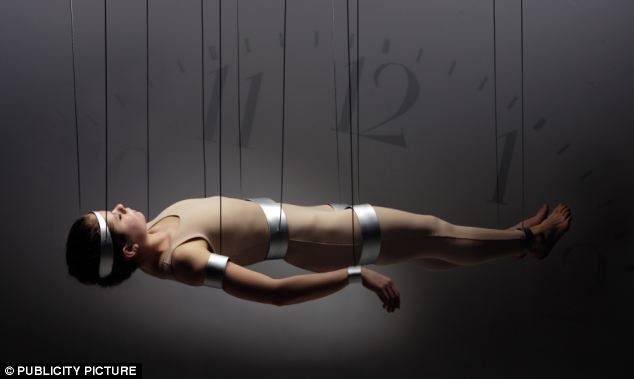
Anna Bagenholm was skiing in Norway on May 20th 1999 when she lost control and fell headfirst into a frozen stream. The near frozen meltwater filled her clothes and dragged her under the ice. She was able to find a small air pocket and spent 80 minutes there until she was pulled out, not breathing and with no heartbeat. At the hospital her body temperature was recorded to be 13.7C (57F). Still the medical team was able to slowly rewarm her and bring her back to life. She suffered no noticeable brain damage and made nearly a complete recovery – she has only minor symptoms of nerve injury in her hands and feet.
From December 19th until February 17th 2012 Peter Skyllberg survived in his snowbound car on a forest road in Sweden. He had nothing to eat after the first day or so, and said he ate snow for water. It seems that his body metabolism slowed down and he went into a sort of hibernation.
In 2014 a 16 year old climbed into the wheel well of an aircraft for a 5 ½ hour flight at an altitude of 38,000ft and a temperature of -50F. That is 9,000ft higher than Mt Everest! Oxygen is very low at a height like that, and he didn’t have any special equipment or clothing. What is even more amazing is that he was only discovered because he was walking around the tarmac in a dazed state. He later said he lost consciousness when the plane took off, and regained it about an hour after the plane landed.
In 2005 a Japanese man named Mitsutaka Uchikoshi went missing on a climb of Mt Rokko in Japan on October 7th, and found on the 31st. He had almost no pulse and his body temperature was 22C (71F). He was treated for severe hypothermia, multiple organ failure and blood loss. His doctor said that he fell into a sort of hibernation, protecting his brain functions and ending his need for water and food. He recovered without any damage to his mind or body. Uchikoshi said this of his experience: "I lay down... in a grassy area, which felt good in the sunshine, and eventually I fell asleep. That's the last thing I remember."In a book from 1850 called Observations on Trance, it describes an Indian fakir was buried alive in a small box in the presence of the governor, Sir Claude Wade. A few months later the box was unearthed and the fakir was restored to consciousness. Seems unbelievable, but two different tests were conducted with yogi’s in modern times.
Indian yogis studied under laboratory conditions of simulated pit burial. One yogi went into a state of deep bodily rest and lowered metabolism and was able to remain in an airtight box with no ill effects and no sign of tachycardia or hyperpnea for 10 h.
In a different study done in a more naturalistic setting on a different adept, Yogi Satyamurti (70 yr of age) remained confined in a small underground pit, sealed from the top, for 8 days. He was physically restricted by recording wires, during which time electrocardiogram (ECG) results showed his heart rate to be below the measurable sensitivity of the recording instruments.
There are the reports printed in the British Medical Journal in 1900 of Russian peasants in Pskov that seemed to hibernate through the long winters. A large quantity of hard bread is made before the long sleep, then they all gather round the stove and go to sleep. Once a day they wake up and eat a piece of the bread and have some water, then back to sleep. Taking turns per day, one member keeps the fire going. When the spring arrives they all wake up and life goes on like normal. they called it lotska, and it hasn't been reported since - so take this story as you see fit.
But back in antiquity, Hippocrates noted that people with severe injuries survived more often in winter than in summer. During the Napoleonic Wars it was noticed that wounded enlisted men left outside in winter had higher survival rates than wounded officers kept warm by the fires in tents.

Some of these events seem impossible, but they happened. So what is going on?
It is known that some animals such as certain turtles, frogs, fish, insects and others can be frozen and thawed out without any problems.The champ of them all being the tardigrade, a small creature about the size of a poppy seed. It can survive a range of temperatures from -200C (-328F) to 151C (304F). As well as numerous other extreme conditions, such as lack of water or oxygen - even the vacuum of space and large amounts of radiation. They do this by entering cryptobiosis.
Cryptobiosis is an ametabolic state of life entered by an organism in response to adverse environmental conditions such as desiccation, freezing, and oxygen deficiency. In the cryptobiotic state, all metabolic processes stop, preventing reproduction, development, and repair. When environmental conditions return to being hospitable, the organism will return to its metabolic state of life as it was prior to the cryptobiosis.
Plenty of mammals hibernate: Bats, hedgehogs, squirrels, skunks, rodents, bears and others. This is mainly a response due to little food available during the winter. Some of these animals will also torpor, which is like a light hibernation.

But only one mammal is known to have a body temperature that falls below freezing during hibernation – the arctic ground squirrel. During their hibernation their heart beats about three times per minute and they barely breathe. Their metabolism basically stops and, curiously, about every three weeks their rates increase to a level of sleeping for 15 hours before falling back into hibernation. Suggesting that hibernation doesn’t fill the need for sleep, which slowly builds up.
Ok, that’s great for those animals but humans and primates are tropical creatures. Without clothes, we start to feel chilly at around 25C (77F). So we never had an evolutionary need to hibernate and lost it, right? Well, there is one primate that hibernates – the fat tailed dwarf lemur of Madagascar. Instead of cold, snowy winters creating a lack of food, their dry winters cause a lack of food. In response, they have been observed to hibernate for up to 7 months each year. They also share 98% of their genetic makeup with humans.
For this reason they are currently being studied to find the secret to their hibernation, which could unlock possible human hibernation. If we share the same code, perhaps there is a chance to awaken it in us. It would be awfully strange to have it be hidden in that small 2% difference. Chances are good that we still carry it.

One gene is more active during hibernation than during the lemur’s active state. α2-Macroglobulin (A2M). It functions to inhibit blood clotting, which is especially important during hibernation as blood circulation is greatly diminished and the risk for fatal blood clots in humans is high when that happens. Humans create this as well, it is produced by the liver.
Other researchers are looking at molecules such as ghrelin, hydrogen sulfide, and adenosine monophosphate (AMP). Ghrelin is a peptide that is linked to hunger, low levels decrease hunger and metabolism. Hydrogen sulfide has been shown to create a state of hibernation in mice and rats, but failed on larger animals such as a pig. AMP is similar, when injected into mice and those mice placed in a cool cage their metabolism drops by 90%, heartbeat and breathing drop to near zero as well. When the AMP wears off, they warm and wake up and are unharmed.
One particularly interesting enzyme is cystathionine beta synthase (CBS), which stimulates the production of hydrogen sulfide in hamster. If that hamster is injected with a chemical to inhibit CBS and forced into a hypothermic state it will damage its kidneys. That type of damage is what is expected to happen to non-hibernating animals, like us, when subjected to those conditions.
What do researchers expect to gain from all this?
They want to save lives. In the United States, nearly two-thirds of deaths in people under the age of 34 are due to injuries and violence.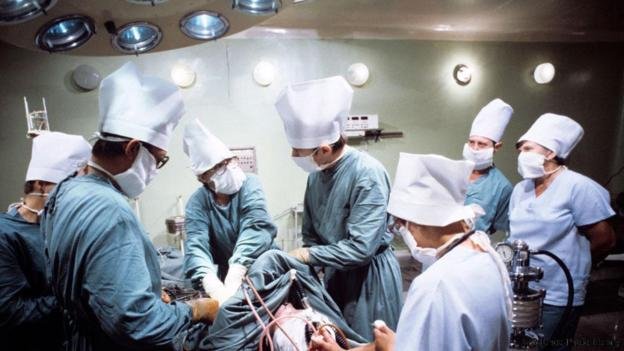
Dr. Sam Tisherman has been working on a process called Emergency Preservation and Resuscitation (EPR). This involves replacing the blood in the body with a cold saline fluid, decreasing the body temperature to 10C (50F). When this happens they will have no heartbeat, breathing, or brain activity. By chilling the body and brain, the need for oxygen is diminished and the length of time without it before brain damage is increased.
He says it is the only way to cool a human fast enough to prevent tissue damage. By doing this they will enlarge the window that doctors and diagnose and repair traumatic injuries, such as gunshots or car accident victims.
It will give about 1-2 hours in which the work to repair the body can take place without fear of losing the patients life. After, the saline is replaced with blood and the body slowly re-warmed. If they heart does not start on its own, resuscitation will happen by using a heart-lung bypass machine.
This process has already been successful with pigs.
After anesthetizing the pigs and giving them serious wounds that led to shock and extreme blood loss, the surgeons quickly chilled the pigs' bodies to 50ºF and pumped their veins full of a solution used for preserving transplant organs. At that point, the pigs were almost dead. They had little to no heartbeat, extremely reduced blood flow and no measurable electrical activity in the brain. The surgeons operated on the pigs and repaired their injuries. The pigs were revived when their temperatures were returned to normal and warm blood was pumped back in. The pigs bounced back with no noticeable physical or cognitive impairments.
What does this mean for space exploration?
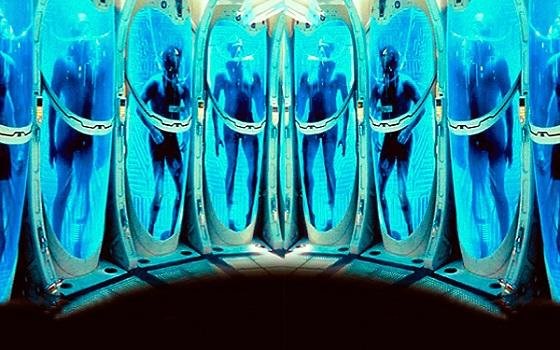
While this is being done with saving people’s lives, it could be a start to long term suspended animation for humans. With our current technology, it would take generations to travel the stars. Even if decades of human suspended animation is not achievable soon, maybe we can discover how to do it for a few months at a time, long enough to get to Mars.
If the crew could be placed in stasis, the ship wouldn’t need to carry as many supplies and could reduce living space size, thereby being lighter and smaller. Also, the crew wouldn’t have to contend with being locked up for 180 days together, lessening boredom and bickering. A company called SpaceWorks is looking into a process called therapeutic hypothermia to drop the body temperature by 5-10 degrees fahrenheit. A 5-7% reduction per degree in oxygen use can be achieved from those first few decreases. At a body temperature of 55F (13C) only 4% of the normal oxygen is required.
Medical use of therapeutic hypothermia have been done on humans for up to 7 days, but always because of a medical emergency – never on a healthy person. Fortunately it has become an area of key interest for many medical research groups. So we may find out about many unanswered questions on how to use it for space travel.
Cognitive Function: How would a long term stasis affect a person? How long until normal thinking returns?
Muscle atrophy and bone loss: In a weightless environment it takes a lot of exercising just to slow down atrophy, so how would being motionless increase the effect. SpaceWorks thinks that a drug cocktail and electrical impulses would be used to combat this.
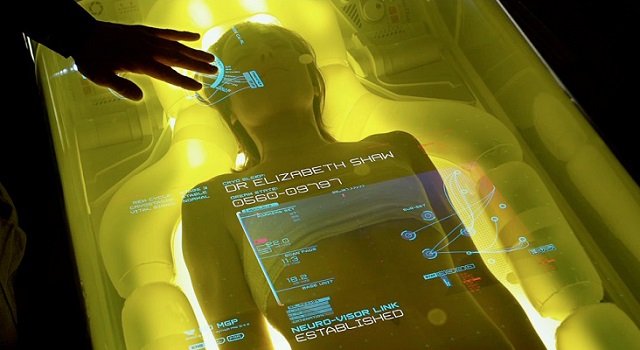
There are some ways that help too.
Intracranial pressure: Astronauts report that in space body fluids tend to move to the upper body. This puts pressure in the skull and affects vision. SpaceWorks has found that induced hypothermia on Earth reduces cranial pressure.
Radiation: Exposure to radiation is a huge hazard to humans in space. But testing on animals has shown that animals in a torpor (light hibernation) state show reduced cancer rates and effects of radiation. They also think that some of the weight reduction achieved by needing less supplies and space could be used to provide more radiation shielding.
SpaceWorks plans to do long term tests on animals, then humans, and then animals in space and humans later.
Their study has shown that if the crew can be in stasis for the journey to Mars that a 5-fold reduction in pressurized volume, and 3-fold reduction in spacecraft mass can be achieved. Or more simply, for every 100 days of the crew in stasis only about 5 days worth of supplies would be needed. This means a trip to Mars that would normally be 400 tons can be reduced to 220.
With the examples of humans ‘accidentally’ falling into a suspended animation state and yogi's seemingly able to bring on such a state through extreme mental training and concentration, I am confident that we still have the secret of cryptobiosis locked away inside us. With enough time, experimentation and brainpower a way to artificially induce the same effects can be found and then improved upon.

One day astronauts could just go to sleep, and then wake up once they arrive, like no time has passed - whether that is Mars or a planet around a distant star.
My moment of honesty:
- My interests vary but I strive for quality work, check my blog for proof.
- I will not fill up your feed with crap, I have only resteemed once.
- I will also reply to all your comments if they warrant any reply.
- These things I promise to you. So follow me, or don't. I want you to do what you want to.
@getonthetrain
Sources:
- Do Lemurs Hold the Secret to Suspended Animation?
- NASA Eyes Crew Deep Sleep Option for Mars Mission
- Human hibernation: The secrets behind the deep sleep
- How It Works: Putting Humans In Suspended Animation
- Suspended Animation In Space Travel: What Scientists Still Need To Learn
- The Curious Case of Human Hibernation
- Scientists have unlocked 1 secret to Arctic ground squirrels’ deep-freeze - and that could be a big deal for humans.
- At Death’s Door, He Was Put on Ice



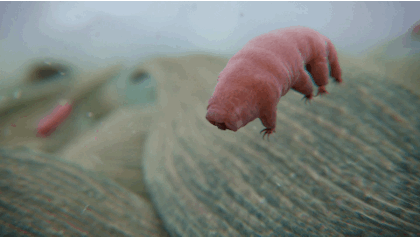
Absolutely fascinating! Thanks for your hard work! :) :) :)
It did take a while to research and write, so thank you very much!
One is indeed dead only if warm and dead :)
It appears so. :)
Wow that tardigrade is crazy
There are five different versions of cryptobiosis, and the tardigrade does all of them - the only known animal that does so.
tardigrade are pretty cool creatures. too bad there so small. I would love to see a field full of these guys running like wild buffalo.
I don't know about that, their mouth shoots out to grab things and it's full of sharp teeth! I don't know if I would want to see a buffalo sized one. :D
i dont want to be in the field. maybe watching from above. lol
Very interesting read. I watched a video on this the other day and found it very interesting. http://carteblanche.dstv.com/player/1108474/
Great video!
What a juggernaut of an article. How you came up with such an incredibly well thought out and presented article like this is anyone's guess.
Very well done and look forward eagerly to your next post, buddy!
Thank you @ezzy. It was pretty in depth and I had to sort through a ton of information, but I like to be thorough and present quality stuff.
You know what? This was a really cool article. Upvoted and followed.
Hey, thanks for the compliment! I have read some of your stuff before too, so you got a new follower right here. :D